In this Episode
- [00:40]Stephan introduces Dr. William Davis, a cardiologist and author of the New York Times #1 bestseller, Wheat Belly.
- [01:58]Dr. William details why wheat has been maligned by doctors today.
- [08:56]Dr. William tells his motivation behind the Wheat Belly Movement and his mission to educate people who are willing to take care of their health.
- [13:15]Dr. William shares a spectacular insight into the bacteria called Lactobacillus Reuteri.
- [18:54]Stephan shares his wife, Orion’s journey in treating her shoulder pain by doing Stem Cell Therapy.
- [26:09]Dr. William shares his recipe in making L. Reuteri yogurt by using Yakult. Recipe can be accessed in his Wheat Belly Blog.
- [32:34]What is a fecal transplant and why it should not be the first choice in treating people’s microbiomes as per Dr. William.
- [37:49]How to check if you have a case of small intestinal bacterial overgrowth (SIBO).
- [51:29]Dr. William shares tips and advice on preventing autism or helping somebody with autism.
- [55:58]Check out Dr. William Davis’ most recent book, Wheat Belly (Revised and Expanded Edition), and websites, blog.undoctored.com and wheatbellyblog.com for great resources about health and nutrition.
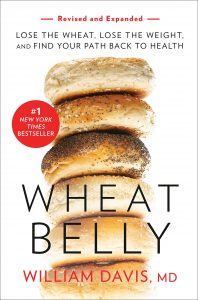
It’s so great to have you on the show, Dr. Davis.
Hey, Stephan. Glad to be here.
For our listeners and viewers, let’s start by getting them to understand why wheat is so maligned by so many doctors? Because it’s not the wheat itself. People have been eating wheat for hundreds, thousands—who knows—tens of thousands of years, but the wheat has changed and it’s become a problem for us. Could you go into some more detail about that?
You’re right. Wheat has been consumed by humans for about 10,000 or 12,000 years which, by the way, represents 0.6% of our time on earth, less than 1%. When first humans did turn to the seeds of grasses—that’s what wheat is literally—there was an explosion in tooth decay, a doubling of knee arthritis, periods of iron deficiency, and anemia. There were health problems. But you’re right, it did sustain humans. There was a major downturn, it helped but did sustain us.
But something weird happened around the 1970s–1980s, there was a big push by agribusiness to make increased yield per acre and this was achieved. One of the things that were achieved was converting a 4½- or 5-foot tall plant down to an 18 inch tall, very short stocky plant with very large seeds. This is called the high-yield, semi-dwarf variant. Since that day in the 1970s, this has essentially placed all wheat on this planet.
It did yield four-, five-, eight-fold more wheat flour per acre, but when you change something so drastically, you also change characteristics. You change its proteins and you change the effects on humans. For instance, one of the things that changed was the glide and propels in gluten, but it’s really the glide in protein within gluten. The glide in protein was dramatically changed by these agricultural manipulations. One of the things they did, for instance, was to amplify the potential of this protein to trigger celiac disease, so there’s been a four-fold increase in celiac disease since this change was introduced.
They also did things like increase what’s called phytate content and phytate are nothing more than pesticides. It’s a naturally-occurring pesticide in wheat and other plants, and it keeps insects, rusts, and molds away from the plant. Farmers and agricultural scientists increase the content of phytates for increased resistance to pests, but it’s also highly toxic to humans. It binds all minerals in your gut and you poop it out. If you get magnesium, iron, calcium, zinc, manganese in your diet, you pass it out in the toilet.
Modern health care has evolved to treat the consequence of grain consumption.
Of course, my colleagues treat iron-deficiency anemia caused by grains with iron injections, iron supplements, and blood transfusions. It’s an illustration of how modern health care has evolved to treat the consequence of grain consumption. The envelope packed in a content of grain was increased by agribusiness and farmers because that’s the carbohydrate. More carbohydrates were thought to be a good thing, but now it explains why modern wheat raises blood sugar higher than almost all other foods, including table sugar.
We have this conglomeration. That’s just a partial list, Stephan, there’s more. A partial list of the reasons why human health is substantially degraded by consumption of wheat and grains, people see it as a gluten issue, when gluten/glide is really only a small slice of the problems associated with wheat and grains.
All right. This big kind of sea change happened with the evolution of big agribusiness back in the 70s and it’s caused so much havoc in our food supply, loss of many variants, not just in wheat. We’re talking about apples and everything; there were so many different variants of apples that are extinct now. It’s really sad.
There’s a seed vault in Svalbard in the Arctic Circle area and they’re storing some of these seeds that, hopefully, will be kind of resurrected and used in the future, but all these different variants are going obsolete and extinct. It’s very sad. What you didn’t mention also in relation specifically to wheat—it’s a very contentious issue—is glyphosate, Roundup Ready crops and all that. How does that play into the whole equation here?
It’s a big issue, no question. The emergence of glyphosate with wheat, whether it’s used as a desiccant, whether it’s used as a weed killer, whether it’s used in genetically modified corn or soy, it’s a huge problem because of its endocrine-disrupting properties and its lymphoma-causing properties. People often say, “Well, that’s the only problem with wheat.” If that were true, all we’d have to do is eat organic wheat and we’d be absolved of all the problems. Of course, that’s not true. You can still have all sorts of colitis, Crohn’s disease, psoriasis, and rheumatoid arthritis by eating wheat even if it’s organic.
Wheat has been consumed by humans for about 12,000 years. When early humans started eating wheat seeds, there was an explosion in tooth decay, a doubling of knee arthritis, periods of iron deficiency, and anemia. Share on XGlyphosate, no question, Stephan, a big part of the problem. It’s representative of the horrible practices of moderate agribusiness, whether it’s glyphosate, genetic modification, or purposely introduction of numerous mutations into plants. With never a question asked about human safety, very few questions are asked, very few clinical data exists to prove the safety of these things. Of course, now we have a world.
When I was a kid, my backyard was full of crickets, grasshoppers, occasional toad, there’d be fireflies, hummingbirds, and lots of birds chirping. I go out to my backyard in Wisconsin, not that heavily-populated area and there’s no grass. I haven’t seen grasshoppers in years. There are no fireflies, there are no hummingbirds, there are a tiny fraction of birds because we’ve killed everything. What we’re doing with wheat, grains, corn, soy, and heirloom tomatoes is just part of a big landscape of problems introduced by big agribusiness.
Speaking of which, I remember I spent a lot of time in Wisconsin myself, in Madison, in my adult life. I’d been driving in the earlier years of my adulthood and there’d be bugs getting smashed on the windshield as I was driving on the freeway, that doesn’t happen anymore.
Good point. Right. I’m glad you mentioned it.
The bugs are gone.
Yes. Good point.
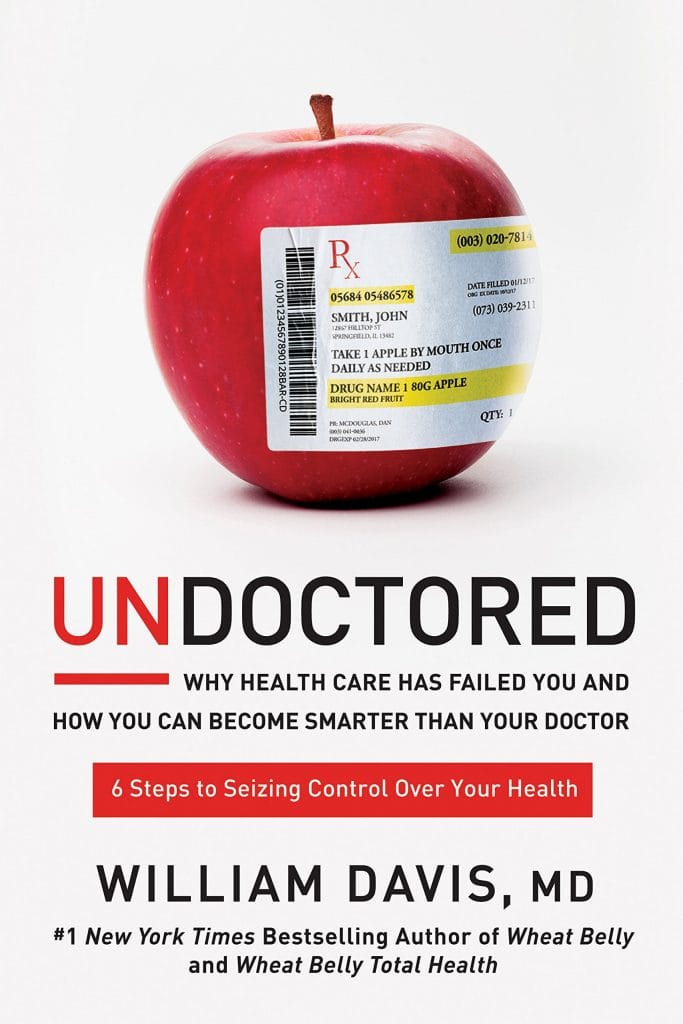
This is a big problem. This is a global catastrophe waiting to happen because as the pollinators disappear and the insect food for birds and other creatures that eat these insects, those go away and we lose other species up the food chain. It’s a domino effect that’s going to be really sad and catastrophic potentially, I think.
Yeah. Obviously, you, I, and your listeners can’t fix all the problems of the world that are being produced by big agribusiness, big pharma, big food, benign neglect of the US government, or the heavy-handed influence of industry and government policy like the dietary guidelines.
My solution, Stephan, has been if you and I can’t move the USDA, the FDA and the US Department of Health and Human Services, we can at least help educate listeners, people willing to open their mind to the idea that the food plate food pyramid is garbage, it’s nonsense, that the stuff you buy in the supermarket, the cereal aisle, is hardly detrimental to health, and that this reliance on prescription drugs is an absurd situation, including the emergence, the proliferation of biologic drugs that are draining the US pocketbook.
All drugs that cost $3000–$4000 per month per person that are almost completely unnecessary, that we have the means if you’re given the right tools. But it won’t come from your dietitian, it probably won’t come from your doctor. That was the reason one of my motivations in writing the Undoctored book was because I saw people like your listeners taking the reins of health and they’d tell me this. They say I told my doctor I was going to do the Wheat Belly Lifestyle, and my doctor said don’t do it. You could die of a heart attack. Here’s Lipitor just in case.
This person would do it anyway, despite what the doctor says. They’d come back six months, a year later and say, “I did it. I lost 72 pounds. I’m no longer a Type 2 diabetic. I’m off metformin, insulin, and Byetta. I don’t have rheumatoid arthritis. Also, Kleiss is now gone. I don’t take prednisone anymore. My psoriasis is gone, my depression has lifted. My migraine headaches are gone, I don’t need Imitrex anymore.” The doctor says just do what you’re doing. There was no interest in what happened.
What I would hope my colleagues would ask—occasionally, some do—is, “What the hell? What did I overlook? What did I fail to see? Tell me what you did so I know maybe I learned from your experience.” That almost never happens, Stephan. It’s this idea that the doctor has all the answers.
What I saw happen was people getting magnificent health, slenderness, and functioning despite the doctor. The Corona pandemic highlights that we still do need a healthcare system, we do need ventilators and ICUs—no question about that—but the whole world of common chronic diseases that have overrun American health, Type 2 diabetes, obesity, hypertension, a fatty liver, all that stuff. That stuff, people can manage on their own and obtain results that are dramatically superior to what the doctors are capable of achieving.
We’re not experiencing a health care system. It’s a sick care system.
Yeah. That reminds me of how I’ve heard many times people say that we’re not experiencing a health care system. It’s a sick care system.
Absolutely, yes. Well put.
Who was it who supposedly said that let food be thy medicine? Is that Hippocrates?
I think it was Hippocrates. Very prescient and I think that’s true. I would tell you this, too. One of my bugaboos in the world of paleo, ketogenic diet, Atkins, and South Beach, one of the lessons learned is diet is very powerful. But in modern life where, for instance, you and I work indoors, we all wear clothes in public, we don’t eat liver raw, we all need to take vitamin D. In a world where we get our water from the tap, a bottle, or some other water filtration system where virtually all magnesium is removed, we need to replace magnesium. I remind people that while diet is extremely powerful, you can’t stop there.
With the emergence of the microbiome, part of what I do is I try to help people restore the way their body was supposed to have been all along. Your body is ill-equipped to consume the seeds of grasses, which are wheat and related grains. It’s adapted to being in this bright tropical sun while you run naked or near-naked, vitamin D. It’s adapted to getting rocks and minerals from water that are running over minerals, magnesium.
One of the things we’ve also done is massively disrupted our bowel flora and that’s become eminently clear when modern bowel flora is compared to the bowel flora of primitive cultures and there’s almost no resemblance. But in there, we’re just starting to get those insights. A very powerful observation that when you restore what seems to be something closer to the normal natural human microbiome, spectacular things happen.
Let food be thy medicine. – Hippocrates
What would be some of those spectacular things?
One of the things I kind of told you before we start recording that is this restoration of a bacteria called Lactobacillus reuteri, after the German discoverer, Gerhard Reuter. If we believe what Reuter told us in the 20th century that most people had this organism obtained by breast-feeding from your mom as an infant and it should have persisted and proliferated in your gastrointestinal system.
Unfortunately, antibiotics, herbicide, pesticide residues in food, and other factors have changed the microbiome. One of the casualties of these changes is the loss of Lactobacillus reuteri. Lactobacillus reuteri, oddly, has been found to be responsible for the release of oxytocin from the pituitary. When you get reuteri back, you have a flood of empathy for other people, you have a desire for social connection. It makes me wonder, Stephan, is the loss of Lactobacillus reuteri, at least part, not entirely, but at least part of the explanation behind increasing social isolation, record suicide rates, increasing divorce rates. I think there’s more to it. That’s what I see happening.
Maybe even a rise of narcissism.
That’s an interesting idea, it could be.
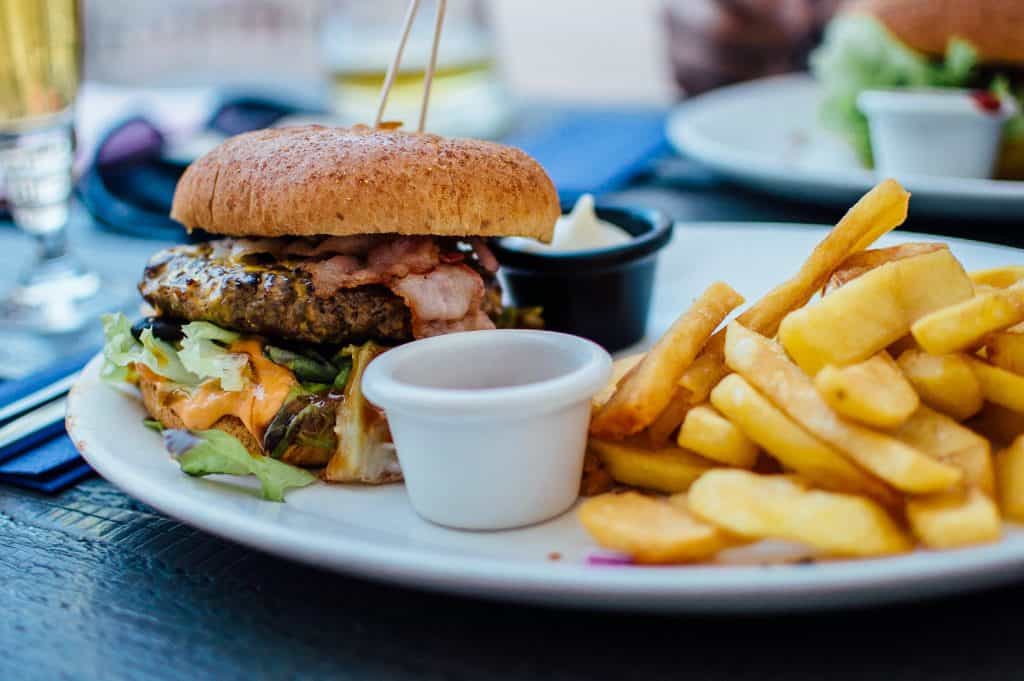
I’ve had one of the top experts on narcissism on this podcast and she was fascinating. The differences between narcissists, sociopaths, and psychopaths and understanding how they think and whether they were created out of nurture or nature. It is just a fascinating discussion.
That is a fantastic discussion. I will tell you, on a real-world level, one of the things we’ve done is, a lot of evidence surrounding this bacteria has to do with two specific strains. It is something called strain specificity in the microbiome. Very briefly. You have E. coli in your gut, I have E. coli, your listeners have E. coli, but if you eat romaine lettuce from the Central Valley of California tainted by cow manure, you can die of E. coli. Same species E. coli, different strains.
Strain differences, strain specificity can literally be a life-death difference, so we have to pay attention. Unfortunately, when your listeners buy a very costly or expensive probiotic from the store, the strains aren’t even specified, which is a major oversight.
It might not be an oversight, it might be on purpose because it doesn’t have the varieties that we really need in our diet, but they want to sell lots of the product.
Excellent point. I think that there’s this truth to that. But we get these two very specific strains of Lactobacillus reuteri for which we have the evidence that has certain other effects beyond the oxytocin-type effects. We buy it from a company that holds the patents, it’s a company called BioGaia in Sweden, and they sell it to you in tablets because they’re made for infants. The reuteri has been shown to reduce infantile colic. It’s been shown to reduce infantile regurgitation of formula or breast milk and other benefits for newborns and children, but they sell it to us at very low counts.
One of the things I did was I made yogurt. It’s not really yogurt, it’s dairy fermentation using a very specific process. By the way, your readers can see this and they want to in my Wheat Belly blog, I have a step-by-step guide to making L.reuteri yogurt.
Okay. We use extended fermentation. If you buy yogurt at the grocery store, it’s been fermented for four hours. When we make yogurt, we use 36 hours and we ferment in the presence of prebiotic fiber which is the food that bacteria eat. The end result is a rich, thick, delicious yogurt and you consume a half cup a day.
It provokes oxytocin release. You get all those empathetic effects desired for social connection, but you also get—many people get—an explosion of dermal collagen, such that—the ladies love this—they start to lose their wrinkles within four weeks, their skin becomes moister, their hair becomes thicker and it grows fast, your fingernails and toenails grow faster, your sleep is deeper, you get a restoration of youthful muscle and strength. I gained 13 pounds of muscle in three weeks doing this. I go to the gym 15 minutes once a week or I don’t like to go to the gym, but I gained 13 pounds of muscle and my strength. I’m going to be 63 this summer.
You don’t look like it, by the way. You look younger than 63, for sure.
Thank you. I’m doing lat pulldowns, 200 pounds. Leg press, 415 numerous times only because the machine doesn’t go any higher, I’m too lazy to pack the plates on, the six plates.
You don’t sound lazy at all, but okay.
There’s a wonderful anorexigenic effect that turns off your appetite, puts you in absolute control over appetite and impulse. Sleep is deeper and it’s filled with vivid dreams, libido goes up. In other words, it’s the closest thing I’ve ever come across, Stephan, that turns the clock back 10 or 20 years. It comes in the form of rich, thick, delicious yogurt. It’s the taste, I think, of some of the unbelievably spectacular things coming from these emerging insights in the microbiome.
Modern wheat raises blood sugar higher than almost all other foods, including table sugar. Share on XIt’s almost like a fountain of youth. I kind of discovered a fountain of youth with stem cell therapy. My wife and I both got stem cell therapy treatments from Dr. Harry Adelson who’s Dave Asprey‘s stem cell doctor. It’s pretty amazing. They harvest stem cells from your bone marrow and your fats and re-injected into different parts of your body.
Let’s say you’ve got joint pain in your knee and the pain might go away or back pain or shoulder pain. My wife had shoulder pain for a couple of years that almost completely went away after this treatment. It came back eventually after we just had a baby seven months ago, while she had the baby, I assisted. Carrying a very heavy and energetic baby around all the time has really messed her shoulder up again, the same one, but for two years, she had relief and nothing else worked so stem cell therapy is kind of a bit of a secret weapon, too. By the way, the episode, listeners, for Dr. Adelson is definitely worth a listen. Are you familiar with stem cell therapy at all?
I am but I would not regard myself as an expert.
I’m not an expert either but I’ve gotten pretty good exposure to it. If we were to kind of hand-pick what strains we would want in our probiotic to feed our microbiome, would it be that particular strain that you mentioned, what was it again? Lacto?
Reuteri?
Reuteri, thank you. That would probably be one of them and we would want to keep that in our diet, I would imagine. But isn’t there something to be said for rotating in and out different strains to get the enough of a variety and not overwhelm your gut with the same several strains over and over and over again?
You’re making a crucial point, Stephan, that nobody has an answer to. If we were infants and breastfeeding from our moms and a mom gave us Lactobacillus reuteri, you would have it for the rest of your life. But if I take Lactobacillus reuteri now as tablets or yogurt, it would last for a few days, maybe two weeks, and then it’s gone. There’s something fundamentally missing from the whole probiotic understanding.
I think what it is, this is my speculation stuff and I don’t know this for a fact, I think that’s where the science is heading. I think the problem is not so much which species we’re getting in a probiotic because right now, probiotics are very crude modalities of what they should be like, not specifying strain.
I think the real fundamental problem is that we’re lacking, what I call—this is my terminology—foundational species, that is the handful of species, maybe 10, 12, 20, whatever, that their very presence supports the proliferation and health of dozens to hundreds of other species. I think one of those species is Akkermansia muciniphila which, by the way, we can’t take as a probiotic yet. It’ll probably be coming in about a couple of years. It’s a very specific difficulty in producing it as a probiotic preparation.
When you have sufficient 4%–5% of the entire microbiome occupied by Akkermansia, it supports the proliferation and growth of at least a dozen other species. I think with where this is going is that you and I try to restore those so-called foundational species and you don’t have to take all those other thousands.
It’s almost like a scaffolding for your gut microbiome.
A scaffolding or a farmer who minds the cattle, pigs, squash, lettuce. In other words, somebody to cultivate and mind the garden. I think that’s where it is going. But unfortunately, it means that you, me, and our listeners are still left with a very crude preparation. I don’t think everybody knows what the full answer is. I think the answer in the meantime is to either rotate or increase variety. That variety includes fermented foods, whether it’s reuteri yogurt or other forms of yogurt or kimchi, kombucha, fermented veggies in your kitchen. There are many ways to do this.
How about Yakult? Are you familiar with Yakult?
Let’s talk about that. I was going to actually raise that. You know that Yakult is a source of Lactobacillus casei, a very specific strain, the Shirota strain, that when you get sufficient counts, it reduces respiratory virus, which is very relevant right now with Corona. It reduces respiratory viral illnesses by 50%. And if you do get a respiratory viral illness, it abbreviates it by 50% or more, in addition to resulting in a reduction in multiple inflammation markers as well as perceived things like knee pain.
As you know, you buy Yakult and it comes with those little garbage containers with nonfat sugar, nonfat dairy, and sugar. Stuff nobody should be drinking, but it comes with 6.5 billion counts of Lactobacillus casei Shirota. I did the same thing we did with the reuteri and that is we made yogurt. Once again, using extended fermentation.
You may remember or your listeners may remember that old riddle to kids. If I gave you a penny on day one and doubled it every day over the course of a month, how much money do you have at the end of the month? Kids say $1000 or $10,000. It’s over $5 million, but that increase in money. Day one, a penny. Day two, 2¢. Day three, 4¢, 8¢, 16¢, it seems like nothing. But by day 30, you’re up into millions of dollars. The same thing happens with bacteria.
In the initial few hours, there’s virtually no increase in counts. Yet, commercial yogurt is fermented over four hours. We’re fermenting so that we get those huge ramp-ups in numbers. 30, 34, 36 hours. With the reuteri, I get about 90 billion per half-cup serving. We haven’t quantified the Shirota fermentation. Shirota’s doubling time is doubled twice as fast as reuteri, half to doubling time. We get well over 100 billion because all that evidence that shows us a reduction restricts viral illnesses, tends to involve very high counts.
One of the best studies involved 100 billion of the Shirota. When you make the yogurt, you take 6.5 billion or at least what’s in a tablespoon or so to start your yogurt culture and you get over 100 billion and you, once again, get a rich, thick, delicious yogurt. Now people say I don’t want to eat dairy. We can do this with coconut. You can do it with other things, you can ferment other things with. Though, I will say, fermenting dairy is the most forgiving process. If you can tolerate dairy, you don’t have problems with casein beta A1 in a way and lactose, it’s a very forgiving way to generate very high bacterial counts.
Got you. What is that product called? Your version of this yogurt with that particular strain.
The casei Shirota?
Yeah.
It’s just something we make in our own kitchens. We just happened to use the Yakult as a starting bacteria.

Got you. So, you don’t have a product available to buy. You just have a blog post or something that explains the process for how to grow it.
Yeah, in my Wheat Belly Blog, I’ve got a really very simple recipe. It’s a tablespoon or two of the Yakult, mix it with some prebiotic fiber. We use two tablespoons of inulin, raw potato starch, and acacia starch. Add a couple of tablespoons of—I like to use organic half-and-half because we follow a high-fat lifestyle—organic half-and-half. Make a slurry because the prebiotic fiber will clump, then add the remainder of the organic half-and-half. Stir it, of course, cover lightly, and then keep it 100 degrees Fahrenheit for about 36 hours. At the end of that process, refrigerate. If you consume a half a cup, you’ll get mega dose exposure to the casei Shirota and thereby, probably all those benefits have been seen.
There have been other bacterial strains that have been shown to reduce the risk of respiratory viruses but the evidence is by far—I’m very impressed you knew this—for the Shirota species obtained from Yakult.
That’s amazing. Awesome. Now, if somebody doesn’t eat or consume dairy, what could be the kind of next best thing? I understand that it’s not as forgiving to use these other substrates, but let’s say it’s coconut yogurt or soy yogurt. I’m trying to avoid too much soy because of the estrogenic nature of it but the next best thing, what would it be?
Coconut milk is the next best choice. It lacks, of course, casein beta A1. It doesn’t have whey, doesn’t have lactose, but it’s much fuzzier. A lot of people heat their dairy first, you don’t have to do that if it’s pasteurized. They do that to increase mouthfeel and thickness. But the end result, using the methods I use, yields an already wonderful mouthfeel thickness. But coconut, you do have to heat to 180 degrees.
We use pectin, heat activates the pectin at that same temperature. Stir it in and let it dissolve, we let it cool to room temperature or at least lower than a 100 degrees Fahrenheit because bacteria dies, the strain dies at that temperature. Then, you have to add two tablespoons of prebiotic fiber if you want to follow the methods I use for super-duper high bacterial counts. Then, you hit it with a stick blender to suspend the coconut fat in the aqueous portion. Then you had your bacteria, either a former batch of yogurt or whatever used as a starter, whether it’s casei Shirota, reuteri tablets, or whatever used as a bacterial source.
It’s a lot fuzzier. There’s a preheating process activation of pectin and then emulsification with a stick blender but it’s doable. You can also ferment other things. I’m currently fermenting mango juice in my kitchen with the casei. It takes longer because I don’t drink juice, I’m low carb. Well, you let it ferment long enough so the bacteria take care of the sugar for you and convert it to various metabolites. It makes a kind of a fizzy drink.
Yeah, that sounds great. Is that in your blog as well?
That is in my blog, yes.
Awesome. Where do you think EpiCor lies in this kind of ecosystem of probiotics? I’ve been taking EpiCor for two years now on the recommendation of somebody I know in one of the masterminds that I’m in. His family is like 5% or 10% of the global production of this particular supplement for cattle, for feed. They are a global massive manufacturer and that’s how he found out about EpiCor because that’s one of the prime ingredients that they add to the feed to keep the animals from getting sick. He’s been taking it forever and he never gets sick, he never gets a cold, ever. I’m like, okay, I’m going to try this out. I’ve been taking EpiCor for 2½ years. The number of times I get sick with colds, flu, or anything like that is easily a quarter of what I used to experience.
I don’t know what that is. What’s it made of?
EpiCor is a safe and natural whole food fermentation ingredient. It doesn’t give me the details. I want to know exactly what’s in it. It’s made using natural yeast, Saccharomyces cerevisiae, that goes through a closely held trade secret process. I don’t know what the magic is of this, but it’s been working like gangbusters for me.
I don’t know, Stephan, what that is. No experience.
You can still have all sorts of diseases like colitis, Crohn's disease, psoriasis, and rheumatoid arthritis by eating wheat even if it's organic. Share on XYeah. So EpiCor is an ingredient in many immune supplements, but it’s a branded trademark and you don’t really know what the strains are, what the process is, and all that apparently, from my understanding. It’s not yeast, It’s not beta-glucan, it is a product of a fermentation process. It is a probiotic, I think, and it’s like magic. I’ve been taking it lately in this product from Hyperbiotics and it’s called Hyperbiotics Immune, which they no longer make.
They’ve got Immune Defense which is a different product and so forth so I’m actually going to switch to a different source from Nootropics Depot. I just purchased some EpiCor from them, which is just EpiCor and doesn’t have all the extra stuff, and so forth that Hyperbiotics Immune has. It’s just been really good. The first two bottles I had were just pure EpiCor, nothing else, but then I switched to the Hyperbiotics Immune, which its main ingredient is EpiCor but it’s also got echinacea, zinc, and some other things. Yeah, I rarely if ever get sick. It’s pretty cool.
All right. Very interesting, I learned something.
Cool. Now, I want to ask you about fecal transplants because some people’s microbiome is so messed up that they need to swallow a pill that has somebody else’s feces in it in order to fix their microbiome, which sounds like a horrible thing to have happened, but what do you have to say about that?
I think there’s a time and place when you have Clostridium difficile and E. colitis, that is we say C. diff, typically from taking a prior course of antibiotics, though, now occurring spontaneously. If people haven’t heard this, it’s a very dreaded side-effect of taking antibiotics where there’s a proliferation. You kill off healthy bacteria and you allow the proliferation of this unhealthy organism, Clostridium difficile, which causes bloody diarrhea. It’s very painful and if you don’t treat it, you can die. It’s very poorly responsive and it’s increasingly resistant to antibiotics.
Healthcare always tries to turn every health problem into a drug or procedure because that’s how they get paid.
These people are miserable, not responding to antibiotics. One of the things you can do is either a truly fecal transplant or via an enema or an endoscopy. You’re giving someone else a stool or as you say, you can concentrate the bacteria of someone else, of a presumed healthy person, of which, by the way, there’s no such thing anymore (probably), but otherwise, a presumed healthy person’s bacteria from their stool constrained in a capsule and you swallow it. The success rate, those two maneuvers is 90% or greater. It’s a vivid illustration of the power of both or a microbiome. My reservations are that it’s also a way to monetize. Healthcare always tries to turn every health problem into a drug or procedure because that’s how they get paid.
Let’s put aside C. diff, because I think what’s happening in the world of fecal transplants, they’re trying to expand it to ulcerative colitis, Crohn’s disease, and celiac disease and autoimmune. They’re trying to make it a kind of a very broad spectrum tool. But my fear for that, Stephan, is that there are so many things you could do before you resort to fecal transplantation, such as, you may have heard this, I think we could argue that there is a pandemic, not a Corona pandemic, but a much larger pandemic, one that is as large as or bigger than the epidemics of obesity, Type 2 diabetes, and pre-diabetes.
We know that Type 2 diabetes and pre-diabetes now includes about 103 million Americans (according to the CDC), but if we tally up all the people who I think have small intestinal bacterial overgrowth or SIBO, where unhealthy bacteria have proliferated and then ascended up from the colon into the ileum, jejunum, duodenum stomach, I think we have over 150 million Americans in that umbrella of having had SIBO. The funny thing is it doesn’t show up as SIBO. It shows up as fibromyalgia; the aches and pains of fibromyalgia. It shows up as Hashimoto’s thyroiditis, it shows up as restless leg syndrome, it shows up as rosacea or psoriasis.
In other words, we have this 30-foot long concentration of unhealthy bacterial species, SIBO, that they’re confined to the gastrointestinal tract. But part of SIBO is also an increase in intestinal permeability and the free access of bacterial breakdown products into the bloodstream. This is called a very awkward name, metabolic endotoxemia. What it means is this concentration of 30 feet of bacteria can now export their effects to the brain and contribute or cause Parkinson’s disease, Lou Gehrig’s disease, or contribute to Alzheimer’s, dementia, or it could cause the aches and pains of fibromyalgia, the skin rash of rosacea, or the restless legs of restless leg syndrome.
We know, for instance, that of the people with fibromyalgia, probably 100% have SIBO. Of the people with irritable bowel syndrome, probably between 44% and 84% have SIBO. Of the people with an autoimmune disease, probably 50%, 60%, 70% have SlBO. Of the people with obesity and Type 2 diabetes, at least half have SIBO, and that alone is a huge number. Add all those numbers up and you come to an enormous sum that is unprecedented.
If you treat that with a fecal transplant, you never understood how that person got there, what they can do more naturally to spare themselves a procedure and medical costs. Once you’ve had these kinds of processes, they love to come back and you haven’t instructed that person. I think there’s a more rational prescription emerging for dealing with a lot of health problems, not necessarily C. diff. C. diff is life-threatening, so those people may have to go through a fecal transplant. But let’s say that people with ulcerative colitis where fecal transplant has been shown to be effective, well, maybe we shouldn’t do fecal transplant as a first choice. Maybe we should address the other factors that led them to have colitis.
The underlying cause.
Exactly. I think one of those causes is, not everybody, but I think in a lot of those people is SIBO.
And how do you check to see if you have an issue with SIBO?
Well, first there are kind of telltale signs. Telltale signs would be seeing fat droplets in the toilet because fat malabsorption is part of SIBO. Fat staining the rim on the toilet where the water meets the porcelain. Intolerance to what would be called prebiotic fibers, which are things like legumes. If somebody says I can’t eat beans. If I do, I get all kinds of gas, that’s SIBO, particularly if you have it within the first 60–90 minutes of consumption.

There are diagnoses that are synonymous with SIBO. Fibromyalgia virtually guaranteed you have SIBO. Irritable bowel syndrome (IBS) is virtually synonymous with SIBO. Restless leg syndrome, virtually synonymous. Rosacea and psoriasis are virtually synonymous. If you have those things, you can bet that you have SIBO, and then you can embark on a process either to validate and approve it and then manage it.
But there’s also now a very cool consumer device. Up until recently—if your listeners want to know—if they say things like I’ve had IBS for 10 years. I have a bowel urgency. I can’t drive to the store because I never know I’m going to have an explosive bowel movement. Very incapacitating.
Up until recently, to prove whether this was SlBO, you’d have to do what’s called a formal breath hydrogen gas testing. It’s a pain in the ass. You have to go to a lab, you have got a doctor. If the doctor has no idea what this thing is, that’s another issue, doctor ignorance. But even if he does know, he sends us someplace, gets it done, costs you hundreds of dollars, if not more. There’s often a need for repeated testing. Identification at first, did you respond to management? Is there a recurrence? Hundreds of dollars each time. Many hours of your day. It takes about 3–4 hours to do the test, so it’s a pain.
But about a year ago, a device called the AIRE device came out from a funny company called FoodMarble. A guy in Dublin and a guy in the US invented this device. I don’t have it with me, but you blow into it, it talks to your smartphone and shows you whether you’re blowing hydrogen gas.
There’s a very specific way to do this. You want to do a baseline. Overnight fast, baseline, then consume a prebiotic a fiber because prebiotic fibers are consumed by bacteria.
You can ingest them but you can’t digest them. Some bacterial species convert those prebiotic fibers to hydrogen gas and if you blow hydrogen gas at high concentration, this thing measures 0–10, 10 is high. Within the first 15–90 minutes (maybe longer), you’ve got bacteria in the upper gastrointestinal tract. Then, you can embark in a course of managing it.
I love giving people tools to manage their own health because I think a lot of physicians have abdicated their responsibility.
I will tell you, Stephan, it’s very complicated. I love giving people tools to manage their own health because I think my colleagues—the physicians—have abdicated their responsibility. They’re good at managing ICUs and ventilators, but they suck at managing real health.
If you want health, the last person you ask is a doctor. They have no idea. When you hear things like is it really safe to take fish oil? It could thin your blood? Ask your doctor. Your doctor doesn’t know. The doctor has no idea.
All these items that say if you’re pregnant or nursing, consult your doctor. That’s pretty laughable.
That is. But I love giving people tools they can use on their own. The truth of it is—sadly, I wished it wasn’t this way—if one of your listeners went to their doctors and said, “Hey, you know what? I’ve got fibromyalgia or irritable bowel syndrome, or I’m completely intolerant to prebiotic fibers. I’ve had (let’s say) a bowl of chili, I’ve got gas diarrhea and bloating within 30 minutes I last for a day.” Doctor says…
That sounds unfortunate. Take some Mylanta or something.
Exactly. Take an anti-diarrhea or some lame advice like that. Your listeners are like, “No, I think I have SIBO (Small Intestinal Bacterial Overgrowth).” The doctor says, “I don’t know what that is. Don’t waste my time. Did you consult Doctor Google?” If he or she is doing their job, they may send you to a gastroenterologist.
I tell you, Stephan, because I’ve seen it so many times. The gastroenterologist says, “We’re going to do an upper endoscopy and a colonoscopy.” They love doing that because that’s where the money is. They say good news. you don’t have a stomach ulcer, you don’t have colon cancer. See you. Then your listeners say, “Well, wait a minute. What about my SIBO question?” “Don’t waste my time. Get out of here. You’re fine. I didn’t see anything.”
In other words, there’s no interest. At the very most, a small percentage will say something like this. Here’s a prescription for Rifaximin, which is a conventional antibiotic for SIBO, which has 60% efficacy, but no mention made on how you got it, how you can increase that efficacy rate, and how to prevent the very common recurrences nor how to detect them on your own in the future.
The medical answer to SIBO despite being so ubiquitous is lousy. That’s how I see my role is trying to help people understand. This is what I do every day, every week, help people—among other things—identify their SIBO and then manage it.
Thankfully, there are two herbal antibiotic regimens so you don’t have to take the Rifaximin, which I was very skeptical about because herbal antibiotics are very iffy areas, but now we have pretty good evidence that two herbal antibiotic regimens are as effective as Rifaximin, perhaps superior. We do that.
What are those ones and where do you get them?
There’s a Candibactin Regimen, Candibactin-AR and Candibactin-BR. Another one called FC-Cidal in Dysbiocide. I would tell your listeners, though, as much of a champion I am of self-management and being undoctored. This is an area where you really want some assistance, guidance, and feedback.
If we start with diet and basic, like vitamin D, iodine, and fiber optimization, basic efforts to cultivate a healthy bowel flora like a high potency multi-species probiotic and prebiotic fibers, fermented foods, this SIBO and by the way, its cousin, fungal overgrowth, are more advanced methods and these really—
If we can't change the USDA, FDA, and the US Department of Health and Human Services, we can at least help educate people who are willing to open their minds to the idea that the food pyramid is garbage. Share on XRequire some help.
Yeah. A functional medicine doctor of integrated health. One of the things I also do is we have a deep dive called Undoctored Inner Circle website but it’s a membership website because it requires a lot of staff, a lot of people. We have health coaches, those kinds of people, but they can tell you things like, “Gee, Mary. Maybe you should take Dysbiocide for its biome disruptive properties because of your SIBO. Maybe you should include an antifungal regimen because half the people with SIBO also have a fungal overgrowth, and in case when you manage SIBO, fungal overgrowth replaces it.” There’s a little bit more than you want to hear in an hour.
Got you, but what’s that membership website again?
Undoctored Inner Circle.
I do this every Wednesday night. We have a two-way video interaction about a hundred people and we talk about SIBO, SIFO, the diet, vitamin D, etc. It’s not entirely Undoctored but we have seen spectacular results.
I would have told you three or four years ago, Stephan, that SIBO was this uncommon thing that afflicts. Now, I realize and confirm by the AIRE device, by the testing of the AIRE device, where people are blowing 10, 10, 10, 10, 10 on the device, and then after herbal antibiotics, etc, all they’re blowing on average 1.2, 1.3, and saying my fibromyalgia, for the first time in 10 years, is gone. I’m off Lyrica, I’m off Prednisone, I’m completely pain-free.
Interesting aside for this common problem called SIBO, recurrences can involve the whole different landscape of bacterial species so if your problem is irritable bowel syndrome, bowel urgency, the recurrence might be panic attacks or some other symptom because of a change in bowel flora composition. If you had to go back to the doctor, you would have to go through a hassle of all of that and expense, but if you got that little AIRE device. You blow, you know within two minutes whether it’s a recurrence or not.
I liken this, Stephan, to blood glucose checks in diabetics. You may not remember way back when diabetics didn’t have a finger stick blood glucose and all they had was urine dips. They were in the dark.
If you have an infant for instance and the infant becomes unconscious, is their blood sugar 800 or 30? It was very difficult and this was still in the 80s when people with Type 1 and Type 2 diabetes had kidney failure, blindness, and heart disease at age 27.
Now, that’s been extended because when blood glucose monitors came out in the 80s and 90s, you would know. My blood sugar is 325, here’s how to dose my insulin. My blood sugar is 60, I don’t need insulin; I need something else. That was a game-changer. Not to say that management of diabetes is perfect, it’s not. It’s horrible, but at least from the standpoint of blood sugar, they had this great tool.
I think the AIRE device for breath hydrogen gas—by the way, I have no relationship with the company—and some other measures that are emerging now are the same type game-changer for gastrointestinal health. It’s a hugely helpful tool.
That’s amazing. I’m so excited to check that product out. I want to dig into that. SIBO is Small Intestinal Bacterial Overgrowth and that’s a condition. SIFO, what is the F in SIFO?
Small Intestinal Fungal Overgrowth.
Fungal overgrowth, got it. Okay. That’s fascinating and you said there are plenty of tools that are going to be easier to start with and you rattled off a few examples. I think you mentioned iodine as one, vitamin D. What would be some of these easier tools that you can do it yourself and not mess up?
Let’s say somebody is on a Wheat Belly diet, my diet, or Undoctored lifestyle or what we call ketogenic, paleo, low carb, or Atkin’s, whatever. That’s your diet.
But one of the things you want to tackle also, particularly in this modern day and age, is insulin resistance because the diet often does improve insulin resistance, but there may have been changes in your body that don’t allow diet alone to take its effect so vitamin D restoration.
We try to achieve a 25-hydroxy vitamin D blood level at 60–70 ng/mL, typically achieved by a dose of 5000–6000 units per day of the oil-based gel cap. We all take fish oil to obtain about 3600 milligrams EPA and DHA per day because that yields a blood level of omega-3 or about 10% or greater for which that’s where all the benefits really derive. We make sure we get iodine.
I’m in Wisconsin which is the former goiter belt, where 20%–25% of the population walked around with these huge goiters until iodized salt came along in 1924, and goiters went away. Then the FDA stepped in, their great wisdom said to quit using all that salt, and people stopped using salt.
Iodine deficiency and now goiters are coming back so we address iodine and thyroid optimization. We obtain magnesium, we talked about because we all drink filtered water, not river water or stream water.
I do take living spring water so that’s pretty cool. It’s got good living stuff in there, but it doesn’t last a long time so you don’t want to have that hanging around for several months. You want to use it up within a month.
Your listeners might want to know about one of the things I do for magnesium. One of the problems we have with magnesium is because we all start with profound magnesium deficiency including in the repository of magnesium in our bones. If you try to compensate with tablets, you’re going to have a horrible case of diarrhea because they have a laxative potential. One of the things I encourage people to do is to make magnesium bicarbonate which is a very highly absorbed form of magnesium, but you can’t buy it because it’s so water absorbent hygroscopic as a powder. It doesn’t persist as a powder. It becomes a stone solid rock so we make it with unflavored milk of magnesia, magnesium hydroxide, and carbonated water like seltzer.
The recipe’s in all my stuff. It’s on all of my Wheat Belly books, Wheat Belly blog, Undoctored book, I put it everywhere. It’s called magnesium water. The simple reaction between the magnesium hydroxide, milk of magnesia, and the carbonic acid, and the result is water and magnesium bicarbonate. It’s actually unflavored water, but it’s the most highly absorbed form of magnesium.
I urge people who have some urgent need to replace magnesium like heart rhythm disorders, uncontrolled hypertension, painful muscle cramps like in the calves, or osteoporosis, and osteopenia.
Food is more powerful than any nutritional supplement, any form of exercise, any prescription drug—nothing matches the power of the choices you make in food. Share on XIf I take magnesium malate, magnesium glycinate, magnesium chelate, magnesium citrate, one of those forms as a tablet or capsule, it takes typically two years or longer to replenish body magnesium and even then two years is early.
With the magnesium water, it typically takes weeks, maybe months, it’s much faster. If you have incapacitating calves cramps, you don’t want to wait two years or migraine headaches so the magnesium water can come to the rescue.
Interesting. Wow. I’m going to try that out. This is amazing. I know we’re running short on time, but I really want to cover this topic briefly and get your insights on it.
The links between autism and gut health, and the issues with the microbiome are showing up in scholarly literature. I’m curious what your take is on this and how would somebody prevent autism or at least help with lowering the likelihood of them, their child, maybe an infant, getting autism by making sure they’re getting good microbiome or building a good microbiome. Also for somebody who has a child with autism, what can they do in regards to the microbiome and all the gut problems that child is probably facing?
It’s a very tough issue, Stephan. I’m not an expert in autism, but the things I do know, we do know that kids with established autism do respond to gluten-free diets. I would urge them to be a grain-free diet. That’s a step beyond being gluten-free. It avoids all the garbage replacement food, may it be with cornstarch, rice flour, tapioca starch, potato flour that replace a problem with another problem. I would say go grain-free and don’t resort to garbage gluten-free replacement products. That alone has some beneficial effects.
There may be some beneficial effects to identify other allergens, but I suspect a lot of these people and this is probably true, that a lot of these kids have massive disruptions of bowel flora, SIBO, and perhaps SIFO. What’s not clear, though, is how did this child develop all of these problems and how did they develop so early in life.
It’s likely that something happened either at birth or shortly thereafter even more likely in utero. Is there something wrong with mom’s bowel flora? Is there something wrong with mom’s health that laid the foundation for a child to be born with this condition or develop it rapidly, then develop all these consequences like SIBO, SIFO, food intolerances?
By the way, because I get tied up in these conversations, a lot of food intolerances—you can call it nightshade intolerance, FODMAP intolerance, lectin intolerance, fructose intolerance—the majority of those are SIBO.
A lot of food intolerances—you can call it nightshade intolerance, FODMAP intolerance, lectin intolerance, fructose intolerance—the majority of those are SIBO.
Really?
Yeah. If you address the SIBO, what happens is, you know what? I couldn’t eat potatoes, eggplants, tomatoes, nightshades, or I couldn’t have histamine-provoking foods, now I can. There are also some instances where people say I couldn’t have dairy. I’m lactose-intolerant. They become lactose-tolerant. It’s a vivid illustration of the power of the microbiome in correcting at least trying to correct the microbiome.
Interesting because my stepmom has an intolerance to nightshade foods. Interesting, so she might have SIBO then?
She might get an AIRE device in her stocking this Christmas.
Exactly. That’s right. Usually, they both get Amazon gift cards, but then who knows what they’re getting with it. Now I think I’m going to pick this up. Very interesting and last really quick question. Sprouted grains, what’s your take on that? Is that better than not sprouted? Is it still not good and you should just avoid grains altogether?
The sprouting process reduces the phytate content a little bit. It reduces the wheat germ gluten. We haven’t talked about that, but wheat germ gluten is a very potent bowel toxin. It’s also a pest-resistant factor so farmers have chosen strains of wheat and grains with higher wheat germ gluten content, but it also increased the toxicity of wheat to humans. So sprouting or fermentation reduces wheat germ gluten content a little bit. It reduces the amylopectin A, carbohydrate content a little bit. It degrades some of the gliadin, but the vast majority is still there.
It would be like if I said, “Hey, Stephan. You know what? If you replace those damn full tar unfiltered cigarettes with these nice filtered low tar cigarettes, you’ll be fine.”
So much better for you.
Same situation.
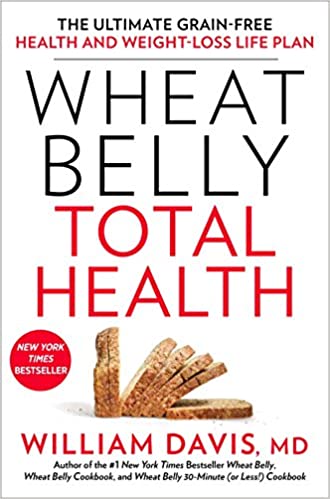
Okay, got it. This has been amazing and I am so excited to try out some of the stuff. I had no idea about magnesium water, AIRE device, and everything, so thank you so, so much.
That’s great. I’m glad I was helpful.
Yeah and if you can again mention those two websites, your blog, and then your membership site, so that our listener can go check those out and perhaps become a member of the site and get some great health advice.
A good intro to a lot of this stuff is the Wheat Belly Blog and also the Undoctored Blog. The most recent book, which is the Wheat Belly (Revised and Expanded Edition), I did take all the books before (I think eight books before), all the updated information, and put it into one concise volume and that is the Revised and Expanded Wheat Belly.
I reserved the Undoctored Inner Circle. If you’re casual and don’t give a crap, and just wanted to lose a few pounds, don’t join the Undoctored Inner Circle. That’s a place for places like I think I have SIBO. My doctor is useless, I need to know. I have coronary disease. All they do is say take Lipitor and follow a low-fat diet, (which does nothing, by the way). I need more, that’s Undoctored Inner Circle. That’s the place for the really serious person who wants to be empowered in health.
Which I would hope will be most of our listeners. Thank you so much, Dr. Davis. This was fabulous.
My pleasure, Stephan.
Now, listeners, please take some proactive, powerful actions from this and read the Expanded Edition of Wheat Belly and change your life and the lives of your loved ones. We’ll catch you on the next episode of Get Yourself Optimized.
Important Links
- Twitter – Dr. William Davis
- Instagram – Dr. William Davis
- Wheat Belly Blog
- Undoctored Blog
- Facebook – Undoctored Blog
- Twitter – Undoctored Blog
- Instagram – Undoctored Blog
- Undoctored Inner Circle
- How to make L. reuteri yogurt
- Some unconventional thoughts on COVID-19
- L. casei Shirota fruit juice
- Magnesium Water: Updated recipe
- Wheat Belly
- Wheat Belly Total Health
- Undoctored
- Dr. Ramani Durvasula – previous episode
- Dr. Harry Adelson – previous episode
- Lipitor
- Hippocrates
- Lactobacillus reuteri
- BioGaia
- Dr. Harry Adelson
- Dave Asprey
- Akkermansia muciniphila
- Yakult
- EpiCor
- Hyperbiotics
- Hyperbiotics Immune
- Immune Defense
- Nootropics Depot
- C. diff
- Small Intestinal Bacterial Overgrowth (SIBO)
- Small Intestinal Fungal Overgrowth (SIFO)
- AIRE
- FoodMarble
- Candibactin-AR
- Candibactin-BR
- Dysbiocide
- The unique probiotic benefits of L reuteri yogurt
- Microbe Mania: The Spectacular Benefits of L. reuteri
- Is Yakult as good as they claim?
- The Yogurt of Love
- 12 Signs That You Have SIBO
- SIBO and Fungal Intestinal Overgrowth
- Do you need Nutritional Supplements?
Checklist of Actionable Takeaways










About Dr. William Davis

More than a book, more than social media, the Wheat Belly phenomenon has proven to be a movement, growing over time and creating an audience eager for food solutions that are healthy, delicious, and empowering.
Disclaimer: The medical, fitness, psychological, mindset, lifestyle, and nutritional information provided on this website and through any materials, downloads, videos, webinars, podcasts, or emails is not intended to be a substitute for professional medical/fitness/nutritional advice, diagnoses, or treatment. Always seek the help of your physician, psychologist, psychiatrist, therapist, certified trainer, or dietitian with any questions regarding starting any new programs or treatments, or stopping any current programs or treatments. This website is for information purposes only, and the creators and editors, including Stephan Spencer, accept no liability for any injury or illness arising out of the use of the material contained herein, and make no warranty, express or implied, with respect to the contents of this website and affiliated materials.
LOVED THIS EPISODE
Please consider leaving me a review with Apple, Google or Spotify! It'll help folks discover this show and hopefully we can change more lives!
Rate and Review








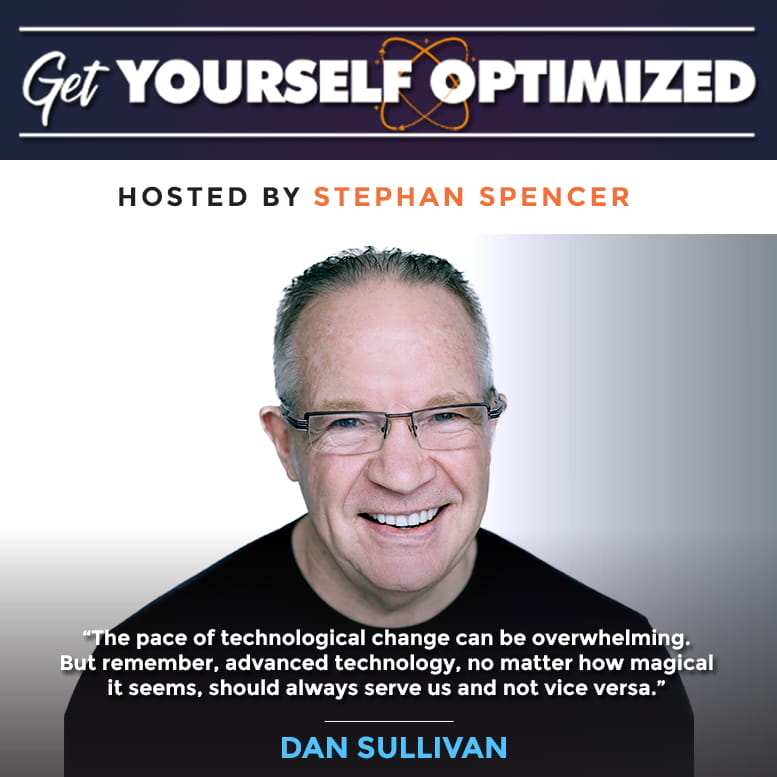



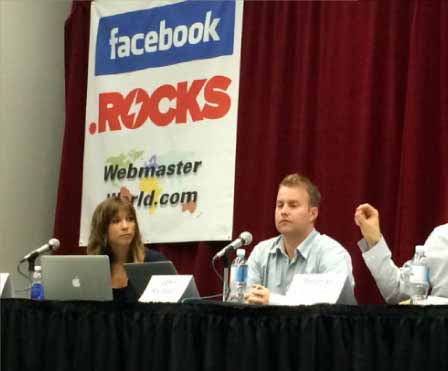

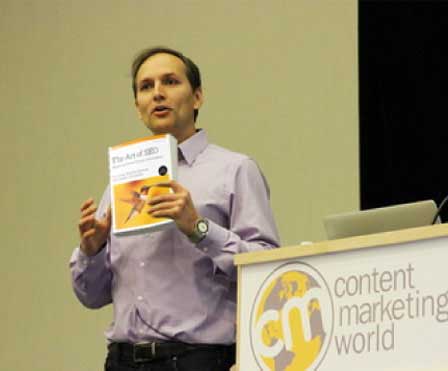


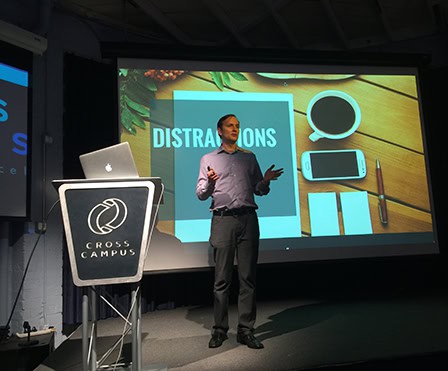


Wow! Very interesting and comprehensive article, Stephen! Wheat can cause bad issues. Good to know and share.
It was mind blowing. I have learnt so much. Will learn to make yogurts.